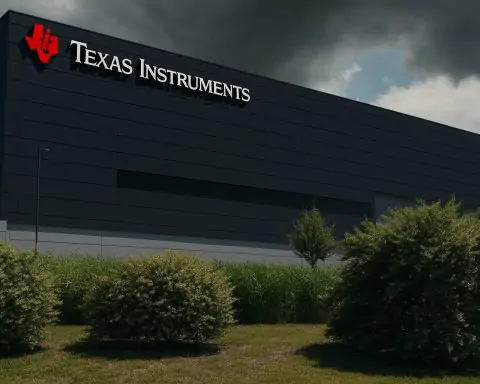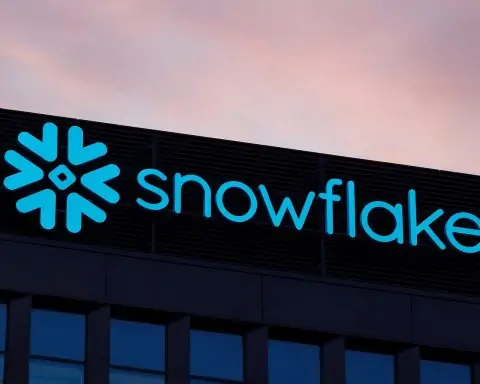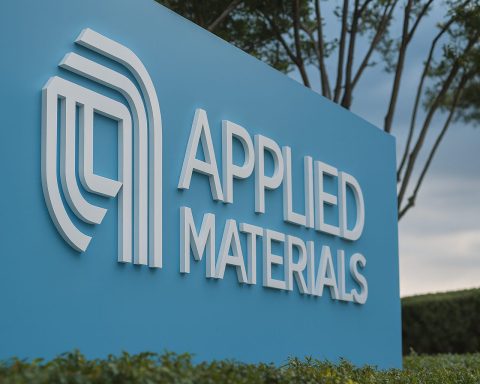- Current Price: $1.43 (closed Oct 13, 2025) [1], after a roughly 15% swing: spiking to $1.93 intraday on Oct 9 then dropping to $1.45, and rebounding by Oct 13 [2]. Pre-market Oct 14 shows ~+$0.39 (+27%) at ~$1.82 [3].
- Market Cap & Finances: Tiny market cap (~$16.7M [4]) and almost no revenue ($0.107M TTM [5]). Cumulative losses are huge (TTM net loss ~$7.76M [6]) and cash is nearly gone (just $132 as of mid-2025 [7]). (Momentus warns it has “substantial doubt” about survival without new capital [8].)
- Recent News: Two new NASA contracts ($2.5M and $5.1M) and a $15M strategic partnership. In late Sept 2025 NASA awarded Momentus a $2.5M contract to test a next-gen thruster (RDRE) in orbit [9], and a $5.1M “COSMIC” contract for space manufacturing experiments [10]. On Oct 13, Momentus announced a “three-year reciprocal services agreement” with Solstar Space (up to $15M in service value) for satellite communications [11].
- Analyst/Investor Sentiment: Essentially no bullish analysts. MarketBeat notes 1 “Sell” rating, 0 “Buy”s or “Holds” for MNTS [12]. Technical forecasts are mixed: one model predicts a ~+11% gain over 3 months [13], but longer-term outlooks see little upside (average ~+$1.43 by 2025 and possible decline toward ~$0.10 by 2030) [14].
- Business & Tech: Momentus is a pre-revenue space infrastructure startup. It offers in-space transportation and satellite servicing (“hosted payloads, on-orbit refueling, deployment and maintenance”) using proprietary plasma-water thrusters [15] [16]. It has done several demo missions (Vigoride vehicles) but no significant commercial revenue yet.
Stock Performance & Recent Moves
Momentus shares have been highly volatile. In early October 2025, MNTS popped to $1.93 on Oct 9 before crashing to $1.45 that day [17] (a ~15% intraday drop). By Oct 13 it recovered to $1.43 [18]. The uptick on Oct 13 coincided with press releases about new NASA and Solstar contracts (see below). In pre-market trading Oct 14, MNTS was trading around $1.82, up roughly +27% on heavy volume [19] (likely reflecting investor reaction to the news). Over the past 2 weeks (as of Oct 13), the stock rose ~6.7%, but year-to-date it is still down ~85% from last year’s highs [20].
Recent price drivers: Analysts note that the jump on Oct 13-14 came after two major announcements. On Oct 13, Momentus reported the $15M Solstar agreement and reiterated its role in NASA tech demos [21]. These deals provide some short-term business catalysts, but the stock remains extremely small and thinly traded, so swings are exaggerated. Technical chart watchers have pointed out a strong near-term uptrend, but warn of high volatility (12–13% daily moves are common) [22].
Recent News & Developments
NASA Contracts: In early October 2025 Momentus won two NASA contracts. A $2.5M award (announced Oct 9) will fund testing of a Juno Propulsion Rotating Detonation Rocket Engine (RDRE) on Momentus’ Vigoride bus in orbit [23]. This was the sixth NASA contract for Momentus in recent months, covering propulsion and materials-demo projects [24]. In parallel, NASA’s Flight Opportunities program granted $5.1M (announced Oct 9) to use Momentus’ platform to host the COSMIC crystal-growth demonstration in microgravity [25]. These contracts are intended to validate new technologies (advanced thrusters and on-orbit manufacturing) using Momentus’ hardware.
Solstar Partnership: On Oct 13, Momentus announced a three-year reciprocal services deal with Solstar Space (a space-based communications company) worth up to $15M in service value [26]. The deal will integrate Solstar’s satellite-to-satellite/Wi-Fi transceiver products with Momentus’ orbital service vehicles. Momentus CEO John Rood said this deepens a strategic alliance, “provid[ing] resilient spacecraft-to-spacecraft operations including refueling and repair, on-orbit inspection and reliable data relay capabilities” [27]. Solstar’s CEO Brian Barnett noted their first flight together is scheduled for early 2026 [28], showcasing both companies’ technologies to government and commercial customers.
Quote: Momentus CEO John Rood commented on the NASA and Solstar wins: “We’re proud to be selected by NASA to perform this key mission” (RDRE thruster test) [29]. He added that Momentus is “very pleased to be playing major roles on programs at the forefront of space technology.” Similarly, for the COSMIC mission Rood said Momentus is “proud to support NASA and the COSMIC mission with our versatile Vigoride platform,” emphasizing that it could “unlock new frontiers in space-based manufacturing” [30]. Regarding Solstar, he noted the partnership gives Momentus “key advantages to provide resilient spacecraft-to-spacecraft operations” and to “deliver the end-to-end infrastructure that future space architectures demand.” [31]. These quotes highlight management’s view that the recent deals cement Momentus’ role in emerging space infrastructure.
Business Model & Financial Health
Momentus bills itself as an in-space logistics and servicing company. It plans to provide “satellites, satellite components, and in-space transportation and infrastructure services,” including payload deployment, hosted payload platforms, on-orbit inspection/repair, and refueling [32]. Its core technology is a “plasma-water” electric propulsion system (using water or another liquid to create ionized plasma) that aims to lower fuel costs for moving satellites in orbit [33]. The Vigoride vehicle is Momentus’ modular bus for carrying small satellites to higher orbits.
Current Finances: Momentus is still essentially pre-revenue. Its reported revenue has been almost zero: for example, only ~$0.11 million in the trailing 12 months [34] ($513 in the first half of 2025 [35]). Meanwhile expenses are heavy: cumulative R&D and SG&A spending drove a ~$7.76M net loss in the past year [36]. Cash burn has been rapid – by June 2025 cash stood at just $132 (essentially none) [37]. To survive, Momentus has repeatedly issued new stock and convertible debt, which greatly dilutes shareholders. (As of Aug 2025 it had >11.6M shares outstanding [38], up from a few million the prior year.) Management explicitly cautioned that, without new financing, there is “substantial doubt” about continuing operations [39].
Outlook: On paper, Momentus’ financial foundation is very weak. It has almost no current income or backlog, and it continues to lose money. The recent NASA deals provide some work for its Vigoride spacecraft in 2026, but revenue from these will flow slowly and only after significant expenses. Industry analysts (where available) tend to rate the stock negatively: for example, MarketBeat shows one analyst “Sell” rating and no buys or holds on MNTS [40]. In short, the business is high-risk: success depends on executing technical demos and securing more contracts, while covering massive operating losses.
Competitive Landscape
Momentus operates in the new-space/space services niche. Its closest peers are other smallsat and in-orbit service firms. Notably, D-Orbit (an Italian NASDAQ-listed orbital transfer company) is often compared to Momentus. D-Orbit already generates millions in sales (about $84M more revenue than Momentus) [41]. Astra Space (ASTR) – a small-launch rocket company – and Exolaunch (private satellite launch integrator) are also cited as similar competitors [42]. More broadly, large space infrastructure firms like Redwire (NYSE: RDW) or Rocket Lab (NASDAQ: RKLB) operate in adjacent markets (manufacturing satellites or providing launch/transfer services). For example, Redwire is much bigger: its market cap is about $1.5 billion [43] (≈90× Momentus’s), and it reported profitable divisions in space robotics and manufacturing.
Compared to these peers, Momentus is very early-stage. It has yet to fly as many commercial missions as some rivals. (Its first operational flight is slated for 2026 with the Solstar payload [44].) In terms of technology, plasma propulsion is a differentiator, but others (like D-Orbit’s IONCUBE vehicle) have their own systems. An industry report notes Momentus among “dozens of startups tackling in-orbit servicing and debris removal” [45]. In other words, it is part of a crowded field of new-space ventures. Most competitors have more established revenue or backing, which makes Momentus’s financial position riskier.
Short-Term and Long-Term Outlook
Forecasts for MNTS are mixed and highly uncertain. Short term (1–3 months): Some technical models see upside. For instance, one AI-based analysis predicted MNTS could climb ~11% over three months (targeting up to ~$1.53 resistance by year-end) [46]. With momentum from recent news, there is speculation on a continued rally if more announcements come. However, volatility is high, and any profit-taking or missed guidance could reverse gains quickly.
Long term (1–3 years): Established forecasts are largely pessimistic. Algorithmic price predictions from investor tools suggest MNTS might hover near its current level in 2025 (~$1.43) with only minor increases, then decline by 2030 (some models project a drop toward ~$0.10–0.30 by end of decade) [47]. These forecasts reflect the company’s ongoing losses and funding needs. No mainstream Wall Street analysts have set higher price targets; indeed, the sole published estimate sees a slight 2025 uptick (+0.3%) [48]. Given the still-experimental stage of Momentus’ business, most experts would caution that success hinges on delivering promised spaceflights on time.
Expert Commentary: Beyond management quotes, few independent analysts have weighed in publicly. Space-industry observers note Momentus operates in an “explosive” sector but emphasize technical and cash risks. One space-economy report calls Momentus a typical “pre-revenue… high-risk” startup [49]. Until the company achieves sustained revenues or hits a successful mission, sentiment will likely remain neutral-to-negative.
Comparisons: In summary, Momentus is far smaller and less proven than its publicly-traded peers. Unlike a company like Redwire (which has sizable revenues and profitable units), Momentus is still burning cash with almost no sales [50]. Its valuation (just ~$17M) is a tiny fraction of others in space tech. If Momentus can execute on the contracts (e.g. successful 2026 flights), it could gain credibility; if not, it will face steep dilution or worse. Most analysts implicitly rate Momentus as a speculative space-stock rather than a mainstream aerospace investment.
Sources: News releases and financial data from Momentus and reputable outlets [51] [52] [53] [54]; stock and analyst information from MarketBeat and financial data aggregators [55] [56]; industry analysis from TS2.tech [57]. (All data are as of mid-Oct 2025.)
References
1. www.stocktitan.net, 2. stockanalysis.com, 3. stockanalysis.com, 4. www.stocktitan.net, 5. www.stocktitan.net, 6. www.stocktitan.net, 7. stockinvest.us, 8. stockinvest.us, 9. www.businesswire.com, 10. www.businesswire.com, 11. www.businesswire.com, 12. www.marketbeat.com, 13. stockinvest.us, 14. coincodex.com, 15. www.stocktitan.net, 16. www.stocktitan.net, 17. stockanalysis.com, 18. www.stocktitan.net, 19. stockanalysis.com, 20. stockinvest.us, 21. www.businesswire.com, 22. stockinvest.us, 23. www.businesswire.com, 24. www.businesswire.com, 25. www.businesswire.com, 26. www.businesswire.com, 27. www.businesswire.com, 28. www.businesswire.com, 29. www.businesswire.com, 30. www.businesswire.com, 31. www.businesswire.com, 32. www.stocktitan.net, 33. www.stocktitan.net, 34. www.stocktitan.net, 35. stockinvest.us, 36. www.stocktitan.net, 37. stockinvest.us, 38. stockinvest.us, 39. stockinvest.us, 40. www.marketbeat.com, 41. www.owler.com, 42. www.owler.com, 43. www.tradingview.com, 44. www.businesswire.com, 45. ts2.tech, 46. stockinvest.us, 47. coincodex.com, 48. coincodex.com, 49. ts2.tech, 50. www.stocktitan.net, 51. www.businesswire.com, 52. www.businesswire.com, 53. www.businesswire.com, 54. www.stocktitan.net, 55. www.stocktitan.net, 56. www.marketbeat.com, 57. ts2.tech







